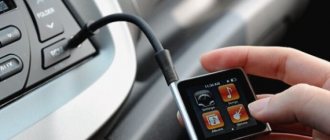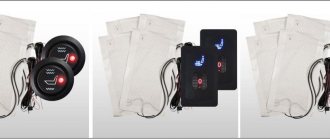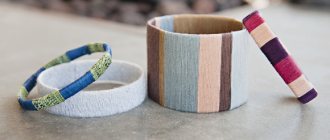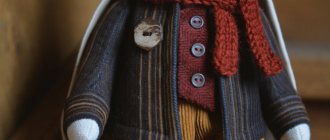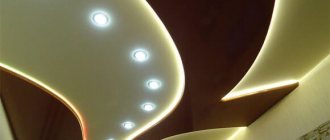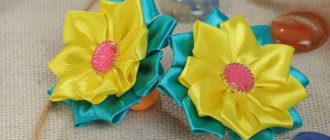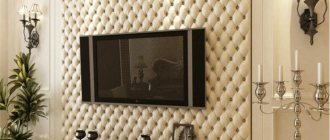Reupholstering car seats is a great way to return the interior to an aesthetically pleasing appearance, because old, worn covers in a car can ruin the entire design. This is especially necessary for a light-colored interior, the upholstery of which has lost its brightness, become stained and cannot be cleaned. Fortunately, now there are many materials and tools that allow you to do the reupholstery yourself. This is not as complicated a procedure as it might seem at first glance; you just need to have basic technical skills and the necessary tools.
Do-it-yourself car seat reupholstery
DIY car seat reupholstery technology
Reupholstering car seats with your own hands is within the capabilities of diligent and persistent people. Since the average car owner does not have the skills to do this kind of work, everything needs to be done slowly, following proven technology.
Preparing to reupholster the seats
Before you start updating your car seats, you first need to do some simple preparatory work:
- Removing seats. Usually fastening is carried out with 4 bolts, but you must first disconnect the negative terminal of the battery in order to de-energize the security system (airbags). Under the seat, you also need to disconnect the electrical wiring terminals, if any, for example, from the electric seat heating.
- Each part of the standard case is signed with a regular marker. You can also indicate the name of the material that will be used in this area of the cover.
- Removing the standard cover from the chair. To carefully remove the old seat trim, you need to press the metal clips on the back of the chair.
- The old cover is cut at the seams into separate parts that will be used as patterns.
- Material calculation. Now each piece of the old cover can be measured and its area can be calculated. The total area of the material must be increased by 20-40%!, which depends on the accuracy of measurements and cutting options.
Making new cases from leather or Alcantara
To make new seat covers you will need some tools and materials:
- gel pen,
- scissors,
- sewing machine,
- foam rubber 5 mm thick,
- glue in a can,
- hammer.
The sequence of actions is as follows.
- Each piece of the old cover is placed on new material and pressed with weights. Use a gel pen to mark with short dashed lines. The marked elements of the new cover are cut out with scissors. When cutting, it is important to take into account such a feature of Alcantara as the direction of the pile. When all elements are combined, the result should be a surface with the same direction of the pile.
- Alcantara and leather are reinforced using fabric-based foam rubber. The connection of the cut parts with the foam rubber is done using glue. You cannot apply the adhesive composition with a brush or roller to the surface of the foam rubber. Therefore, the glue is sprayed evenly from the can.
- The next important step is stitching the patches together. It is important to ensure that the edges of adjacent elements are accurately aligned. This will require some skill in using a sewing machine.
- The seam flaps, spread to the sides, must be glued on the wrong side. First, excess strips of foam rubber and material are cut off, and the lapels are cleaned and degreased. All that remains is to apply glue and press the lapels together.
- An important point in reupholstering the seats will be beating off the seams with a regular hammer.
- The lapels are sewn with a double finishing stitch, and the free edges behind the stitching are not trimmed.
Installing a car seat cover
Installation of a new car seat cover is carried out in the following sequence:
- Before installing the new seat cover, you need to thread the straps. The product is turned inside out and straightened out. The cover is first pulled over the back of the seat.
- Now it’s the “seat’s” turn. Usually this stage does not cause any problems. You need to use plastic clamps threaded through special holes to pull the cover to the base of the chair and secure it by the spoke. The edges of the new cover are stretched evenly along the contour of the seat.
- The leather covering should be completed by heating the material with a stream of hot air. An electric hair dryer is used for this; the main thing is not to overdo it and not burn the case. Gradually drying, the material will stretch like a drum. After this, each chair is steamed using an iron and a damp cloth. Thanks to these thermal operations, the chair cover becomes taut and absolutely smooth.
- The final operation of reupholstering the seats will be to clean the light leather or Alcantara from glue residues, abrasions and fingerprints.
We recommend: Is it possible to flush the cooling system with Coca-Cola or citric acid?
Carefully reupholstered car seats will please the car owner for a long time. During the update process, you can change the design of the car seats, as well as update the upholstery of the doors, ceiling and panels. The comprehensive tuning will change the shabby interior beyond recognition, add elegance to the car and increase its value.
Features of self-cladding
When working with each area of the cabin, it is necessary to take into account the design features. Therefore, we provide recommendations for the main surfaces of upholstery replacement.
Armchairs
Processing the seats requires their preliminary removal from the interior. The upholstery is cut along the seams to preserve the pattern for further processing.
Upholstery of chairs
Using a sewing machine you need to connect the parts. If it is not possible to make covers yourself, then you can buy them in the store for common brands of cars.
Door trim
Patterns for door panels should have a margin of 1-2 cm around the perimeter. This is necessary for high-quality tension on the base. In raised areas, it is necessary to coat the inside of the upholstery and the mating plane with glue to prevent sagging of the fabric. The hole for the window regulator and door handle should be of small diameter so that they overlap with decorative trims.
Door tuning
New headliner
New ceiling upholstery is installed after removing panels, lamps, and handles. If the material is leatherette, then it must be preheated to increase plasticity. At this stage you cannot do without an assistant.
Armrest reupholstery
For armrests, the most suitable material is leather. The cut pieces must be coated with glue for a tight fit. The surface must be blown with a hairdryer to evenly distribute the upholstery over the plane.
Required tools and materials
If you have already decided on the material in which you will reupholster the interior, it’s time to calculate its approximate volume. In total you may need from 6 to 25 meters. But these figures are very approximate: it all depends on the specific car model. So, a crossover or SUV will require much more material than a coupe car. Therefore, do not be lazy and measure the length of the ceiling, the length of the cushions and backrests, the size of the front panel, as well as the width and height of the car doors. Add up all the resulting numbers and add at least a meter as an error. Believe me, you will need it.
In addition to the material itself, you will need other tools:
A set of screwdrivers with straight and Phillips slots for dismantling some elements;
- foam;
- sandpaper;
- degreaser;
- meter tape;
- masking tape;
- cling film;
- marker;
- chalk;
- stationery knife and sharp scissors;
- reinforced threads for stitching leather products;
- sewing machine with a needle and foot for working with leather;
- special high-temperature glue for leather;
- rollers and spatulas with rubber cloth;
- industrial dryer.
Separately, I would like to dwell on the choice of glue. Do not use Moment glue or other similar superglues. Universal glue 88 is often used for reupholstering, but it also has a number of disadvantages. Buy quality glue that can withstand high temperatures. MAH is well suited for these purposes. Its price is quite high, but if you don’t want to see the coating swell and come off after just a few months, spend money on it.
Use high temperature adhesive to bond leather to plastic parts.
How much will it cost to reupholster the interior with natural and artificial leather?
The final cost of reupholstering the interior depends on the price of the material. Eco-leather usually sells for 500–700 rubles. per linear meter. But natural is at least 3-4 times more expensive. High-quality glue will cost about 1,500 rubles. One jar should be enough for all interior elements.
To calculate the resulting amount, add up the parameters of all the parts. So, if it takes 5 m for the ceiling, 1.5 m for the front panel, 7 m for the doors, 6 m for the seats and another 0.5 m for the steering wheel and gear knob, then you will need to buy about 20 m of fabric. Of course, the numbers may vary depending on the size of the car. But in total, the cost of reupholstering the interior yourself will be at least 20–25 thousand rubles.
For comparison: in a car repair shop you will be asked for this service from 50 thousand rubles and more, depending on the quality of the material. When working with your own hands, the savings will be more than 50%. Whether it's worth your time and effort - decide for yourself.
To ensure that reupholstering the interior with leather does not blow your budget, it makes sense to divide this process into several stages. Let's say this month you are working on the seats, next month on the ceiling, and a month later on the front panel, armrest and other small parts. This approach will save you effort, and you can learn from your own mistakes. We recommend starting with the smallest parts - the gearshift knob and steering wheel. With their help, you can understand the general principle of constriction, and things will go much faster.
Source
Preparing for reupholstery
Working on reupholstery requires perseverance, patience and following recommendations.
Before you start updating the seats, it is necessary to carry out preparatory work:
- dismantle the seats, which are secured with four bolts. Before doing this, disconnect the battery terminal and electrical wiring terminals.
- remove all fragments of old covers and sign them. In addition, it is better to write the name of the material that will be replaced in this place.
- remove the standard cover from the seat, first bend the metal clips from the back. cut the cover at the seams, it will be used to cut a new one.
- calculate the material. Take measurements of each part of the old cover. Make a pattern, leaving at least a few centimeters at the edges.
Acura MDX I Solved the problem of a stuck driver's seat!
Due to the sagging of the soft part of the driver's seat and the stretched skin under the butt, I decided to add foam rubber there. I took off the chair and dragged it home, it was so heavy. I grabbed the bottom of the chair from the front and back. I thought I grabbed the frame of the chair from the front, but it turned out to be the guide for adjusting the chair in the horizontal plane. When I came home I discovered that this guide had come out of the grooves. Inside this guide tube there is a cable, the ends of which, when viewed in section, have a square cross-section. One end is inserted into the motor, and the other to the guide rail of the chair. I spent a long time conjuring how to put this guide tube and cable back in, but nothing worked. All upset, I thought why the hell did I take this on. I lost so much time with this tube, I decided to leave it for last.
I started disassembling the seat. I'll tell you no less hemorrhoids there, under the seat there are a bunch of wires and plugs. While I was removing the seat, I also had bad thoughts, because everything that was disassembled needs to be reassembled later in the same way. I removed the seat, started to dismantle the skin, here there are even more hemorrhoids, all the fastenings are on wire rings that are not so easy to loosen. And while you open them with grief, you think about how to attach them back later. Because of the complexity, I think I won’t remove the entire leather cover, I’ll just put foam rubber under the side support. But having overcome my fear, I decide to sort everything out to the end.
As a result, we see the following picture in the photo. The heated seats are intact, there are no burnt wires, the lateral support is very tired. I removed the seat heating, it was glued at the edges, cut out the foam rubber according to the template, glued it to the seat, glued the heating to the new foam rubber and began installing the leather. I did the lateral support last so that this foam would not interfere with attaching the skin in the central part of the seat. It’s not convenient for one person to attach the skin in place, because with the additional foam rubber for fastening the skin, you had to press down very hard, so my wife pushed the foam rubber on one side with her fingers to access the fastening, and I pressed down on the skin with one hand, and hooked the wire rings with the other hand - platypus fastenings. The fingers around the nails hurt on the second day. If someone needs to add foam rubber only for lateral support, then the above-described agony of removing the skin can be avoided. Having removed the seat from the chair, you can move the skin from the side support upward, put foam rubber and pull the skin back. Which is what I did at the end of the whole operation. I placed foam rubber under the side support along the entire length, pulled the skin back and decided that in the place of large folds I needed to add another piece of foam rubber (you can see a piece in the photo).
I attached the seat to the chair frame, attached all the wires and plugs back and set about replacing the removed guide tube. I couldn’t think of anything other than a small collective farm that doesn’t affect the work of the chair. I sawed off half a centimeter from both ends of the tube and made a longitudinal cut on one side of the tube so that the end of the cable could fit into it. I inserted the cable into the tube, inserted the solid end of the tube into the motor, and pushed the motor aside. At the other end of the tube, he bent the cable into the longitudinal slot of the tube, inserted the cable into the right side of the entire structure, and bending the motor with the inserted tube back, the cable on the right fit back into the tube, and the tube wound into the groove on the right side of the structure. Wow, I'm getting smart. As a result, the tube stood in place, I aligned it in the middle and wrapped it with electrical tape at both ends, including the cut on the tube.
For myself, I am once again convinced that no matter where the hand of a simple layman puts his hand, the end result will differ from the stock (manufacturer). In other words, you can always see where Kulibin’s hand has been. I don’t consider myself crooked, because... In life I like to do everything with my own hands, incl. renovation of your apartment with turnkey redevelopment.
Soft backing
A soft lining can be glued to the back of the upholstery. It is especially relevant for the skin. This is a foam material with fabric. The material helps to hold the thread, and it does not fall through the material when sewing. This soft material performs three functions. Firstly, it helps to eliminate wrinkles on the fairly thin upholstery material, and secondly, the soft lining gives better tactile sensations to the surface. Thirdly, this material provides a smooth, even appearance and fullness of the upholstery after installation.
The soft backing is glued with special glue from a can with the soft part to the upholstery, and the fabric outside. The principle of gluing and leveling is the same as when repairing ceiling trim. In addition to gluing, you can additionally stitch along the very edge of the upholstery part. This way the backing is guaranteed not to come off. After this, the excess along the edges of the upholstery part is cut off and the individual upholstery piece can be considered finished.
Workplace
Do-it-yourself seat reupholstery requires sufficient space to disassemble and place the removed seats.
Take the time to design your desktop. It should be even, smooth and large enough to easily roll out the material on it. The table should be well lit. It will be convenient for the material table to be directly connected to the table on which the sewing machine is installed. So, when working with large pieces of upholstery, the table will support the material while sewing. It will be convenient to mark and cut the material on the table.
Advantages of reupholstering car seats in a studio
We recommend: DIY tips for replacing the Granta liftback fuel filter
If you need to update the seats in a short time and the money issue is not of decisive importance, then it is best to contact a specialized sewing studio.
Among the main advantages of reupholstering seats in a workshop are:
- work performed by qualified specialists with many years of experience,
- use of proven quality materials,
- choosing the preferred option,
- providing a guarantee for the service,
- Minimum turnaround time for reupholstery.
But all these advantages of reupholstering in a workshop can be reduced to zero due to the high cost of the service, which may not be affordable for a simple car enthusiast.
Work procedure and valuable tips
The ceiling frame has already been cleared of the remnants of old fabric and foam rubber. You can sand it with 80-120 sandpaper for better adhesion. Before gluing, you need to remove any remaining dust and grease from your hands - we use degreasers, but it is not recommended to apply a lot - if the composition saturates the top layer of the frame, it can cause delamination of the material. Therefore, we are testing this method in a hidden area.
Pasting the frame with material
The ceiling has been laid on the table, fabric has been purchased, and a jar of glue has been opened. Let's get started!
Safety precautions require the use of safety glasses, a respirator and rubber gloves. It should be noted that glue that gets on the front surface of the ceiling will spoil the appearance and will not be cleaned off, so we apply the glue with rubber gloves and smooth the fabric without them.
Using a brush, apply a thin layer of glue to the frame area. We wait for a while according to the instructions, lay the fabric and press it in order, paying more attention to bends and indentations. A small roller, a plastic spatula, fingers and a cloth will help you press the fabric.
It is important that the layer of glue is small and even, it is not advisable to rub the same place with your fingers - it can leave a stain
You should not cover the entire frame with glue - there is a risk of not having time to press the fabric. Therefore, we apply in strips of 30–40 centimeters, this slowness will allow us to avoid mistakes.
The fabric at the edges can be cut along the edge with a sharp knife, or it can be folded onto the back side of the frame by 1-2 centimeters, cutting it with “teeth”. In this case, the fabric will hold up better. However, it is worth considering that installing the ceiling will be more difficult - it will become wider by the thickness of the fabric.
Video: plywood ceiling of a car in a workshop
What mistakes can a novice master make:
- applying a large amount of glue. It can saturate the fabric and protrude from the front side, ruining the appearance;
- violation of instructions for using glue. The glue has not set sufficiently or has dried out. In this case, the fabric will lag behind;
- poor fabric pressure, air bubbles;
- glue or dirt getting on the surface of the fabric;
- lack of material for pasting. Fabric laid crookedly at the beginning of work may “go” to the side at the end;
- poor quality finishing of frame edges.
The ceiling is glued - we give it a soak, the time of which depends on the instructions for using the glue. After this, we proceed to installing the ceiling.
Ceiling installation
To mount the ceiling, you must first carefully place it inside the car. Practice shows that it is easier to remove the ceiling from a car than to install it in place. Therefore, you should use the services of an assistant and wear clean gloves. We put the ceiling in place and fasten it. An assistant must support the sagging parts of the ceiling, preventing the frame from breaking or bending. If this is not done, wrinkles or folds will appear that will spoil the appearance of the finish.
It is better to select the fasteners in advance to match the color of the trim so that it does not stand out. It is also better to replace clips that are broken during disassembly. When tightening the screws, you should be extremely careful; a broken screwdriver will scratch the plastic or fabric.
Evaluation of work and rewarding of the master
The critical stage is acceptance of the completed work. A new ceiling in a car always looks nice, but don’t relax - we must look at all the shortcomings, loose spots, and dirty spots. We correct them if possible.
If you did the work yourself, be sure to reward yourself with a good emotion; if the work was done by a professional, in addition to money, you can leave a good review of his work, tell your friends about the talented master.
Installation of a car ceiling needs to be done only by two people: then the work will be done carefully
Selection of cladding material
Natural and artificial automobile leather are best suited for reupholstering car interiors. Both materials are characterized by high performance qualities, which sets them apart from the less popular carpet or velor. At the same time, leather covering is much easier to do with your own hands than, for example, flocking the interior. The reason for this is the high elasticity of the material, as well as the usual set of necessary tools. Recently, motorists are increasingly choosing Alcantara. However, the price for the original material is almost higher than the cost of genuine leather, while its cheaper substitutes cannot boast of high quality.
For these reasons, we will dwell in more detail on materials such as genuine leather and eco-leather.
Genuine Leather
Genuine automobile leather will become a real decoration of the interior. Is it possible to imagine a luxury car covered with a hard carpet or covered with multi-colored vinyl film?
However, a beautiful appearance is not the only advantage of genuine leather. It can withstand both frost and heat. Cracks will not appear on it due to temperature changes. Another positive property is resistance to ultraviolet radiation. Many materials fade in the sun, so after just a few years of use, the control panel and front seats, which are located directly under the windshield, become noticeably paler compared to the rest of the trim. But this will not affect natural leather. You can be sure that the interior will retain its color.
The interior of the car, covered in leather, looks expensive and solid.
Do not forget about the fire resistance of the material. Accidentally dropped cigarette ash will not harm the interior. Moreover, genuine leather does not absorb foreign odors, which is very important for those who like to smoke inside the car. The skin is also not afraid of other mechanical damage: it will take a lot of effort to scratch or tear such a coating.
On sale you can find material of various textures, including crocodile or ostrich leather. However, when choosing between smooth and perforated leather, it is better to give preference to the latter type. It is softer and more pleasant to the touch. In addition, its wear resistance is noticeably higher.
Perforated leather is softer and more pleasant to the touch
The only thing that can discourage you from upholstering the interior with genuine leather is its price. Its use becomes especially risky when you tighten it yourself. After all, if at some point something goes wrong, a large amount will be thrown away. If you are not ready to take such a risk, turn your attention to eco-leather.
Eco leather
Currently, artificial leather has practically received a second life. Outdated technologies have been replaced by newer ones. Low-quality leatherette is no longer used for upholstery of car interiors, giving way to eco-leather.
Eco leather is a synthetic material. During its manufacture, a thin layer of polyurethane is applied to a woven cotton or polyester base. At the same time, the characteristics of the material directly depend on the thickness of the layer: the thicker it is, the stronger the eco-leather is, but at the same time tougher. For car upholstery, the optimal thickness of polyurethane was experimentally determined.
The material received the name “eco leather” for two reasons. Firstly, during operation it does not emit toxic substances that adversely affect vehicle passengers. And secondly, after its invention, the number of animals killed for their skin decreased sharply, which pleased animal rights activists.
In terms of its external qualities, eco-leather is very close to its natural ancestor. Using special technologies, embossing is applied to the material, making it quite difficult to distinguish it from genuine leather. Moreover, the higher the price of the material, the more identical their appearance.
The appearance of eco-leather is very close to the appearance of natural material
Eco leather has a rich palette. You can use classic black or extreme red in the interior, or you can combine colors to your liking. But coloring natural material will cost you a pretty penny.
In terms of other characteristics, artificial leather is also not inferior to natural leather: wear resistance, moisture resistance and fire resistance are its strong qualities. Both of these materials remain clean for a long time, and if necessary, stains and dust can be easily removed with a wet sponge and soft cloth. It's no secret that many people are allergic to animal fur and skin, as well as the chemicals used in tanning. Eco-leather is perfect for them, as it is absolutely hypoallergenic.
We recommend: Penalty for installing LED lamps in headlights in 2019
At the same time, the cost of eco-leather is several times lower than natural leather, which makes it more accessible to the general public. You can safely take one or two meters in reserve if you are doing self-upholstery for the first time. The remaining material can be used to make a cover for the steering wheel, gear shift lever and other small elements of the car.
Regardless of whether you choose natural or eco-leather, purchase the material from specialized automotive stores. There are many reasons why leather used for making furniture, clothing and shoes is not suitable for upholstery. For example, its instability to temperature changes and reduced wear resistance.
Both natural and artificial materials have drawbacks that may seem insignificant to some. In cold weather, the coating quickly cools down, and in the sun it gets very hot. Accordingly, this slightly reduces the level of comfort. Whether it is worth paying attention to this feature of materials is up to you to decide. In any case, leather is one of the best solutions for interior decoration of a car.
Selection of material used for interior upholstery
In order to reupholster car seats, the following types of materials are used;
Alcantara is a universal fabric of artificial origin, soft and velvety, resembling suede in appearance. The advantages of Alcantara are its durability and wear resistance, as well as the absence of waste when cutting.
The color is chosen based on the interior trim, but the desire of the vehicle owner can be put above all else. When reupholstering car seats, it is best and easiest to use fabric of the same color. However, the use of inserts of a different color gives individuality and presence to the car interior.
Leather is considered a more expensive and durable upholstery material. The leather seats look luxurious and elegant. But during extreme heat, such seats cause discomfort and are not very pleasant to sit on. If the car has air conditioning, then this problem is quickly solved when you turn it on.
Re-upholstering car seats will be more economical when using Alcantara or velor. They have excellent performance properties, and due to their low cost, these materials are in great demand among motorists.
Putting on new upholstery and assembling seats
- When all parts of the upholstery are sewn together, it can be put on the seat and back.
- When installing the upholstery, restore all fasteners that were cut off when disassembling the seat. As you assemble, refer to the photographs taken while disassembling the seats.
- The traditional method of fastening upholstery is the use of special rings. As an alternative method for fastening, you can use nylon zip ties of the required size (10 - 20 cm). They must be of good quality and not break.
Start tightening the seat back upholstery by turning it in the opposite direction and gradually unroll it.
- The upholstery on the back of the seat is a little more difficult to install than on the seat itself. It takes some effort to tighten it. The upholstery should be with the back side facing out. It is placed on the upper part of the backrest and unfolds in stages.
- When putting on leather upholstery, it must be treated with hot steam. This is necessary so that the skin “sits” well and tightly into place. Exposure to heat dries out the skin. When heated, the skin weakens and becomes much more pliable. After cooling, it contracts and tightens the seat. If you don't have a steam generator, you can use a hair dryer as an alternative. When using a hair dryer, adjust the temperature so as not to overheat your skin. If there are no adjustments on the hairdryer, then change the heating by changing the distance from the surface. When heating, you don't need to stay in one place for a long time. Faux leather is less sensitive to heat, but also requires caution when heating.
- A safer option would be to steam the inside of the upholstery before putting it on. This way the steam will not damage the front part. After drying, the leather will lie flat on the seat, without folds or wrinkles.
- If the seat has an airbag, the battery must be disconnected when connecting the seat plugs.
Why do they reupholster the car interior?
There are basically two global reasons why the interior is reupholstered. The first is worn out fabric, the second is tuning. With a good interior, a car greatly increases in value and looks much better. In addition, reupholstery can increase practicality. For example, a leather interior can suppress unnecessary noise and vibration.
Upholstery
When reupholstering, it is not at all necessary to look for the same material as before. It is quite possible to find something radically different, more modern and durable. You definitely need to consult with specialists so that they can guide you on what material is best to take. After all, some of them can not be used throughout the entire cabin, but only in some of its elements. Also, the skin may differ in practicality depending on the class of the car.
Developing a plan
There are two main aspects to consider before purchasing salon supplies. The first step is to first decide what end result you are expecting. In other words, you need to plan the design. The second aspect is to set a budget for the project so that the expected costs do not exceed.
Design plan for cladding
In order to buy materials for reupholstering a car interior, it is a good idea to determine the best option. Perhaps with one set you can achieve the car interior of your dreams. You can also view different kits online, which can lead to a creative change in direction not previously considered. Look at the material, color scheme, weigh all their pros and cons, and then consider their cost.
When designing your car's interior, consider its shape and style. Changes can be made to almost any element - from the seats and headrests to the steering wheel, side door panels, roof and ending with the gear lever. In fact, there are no restrictions on combining different colors and structures of different materials.
If you are adventurous by nature, don't be afraid to make bold decisions, leaving the only factor to consider is good style and a unique look.
Budget for cladding
Before purchasing car interior materials, it is important to remember that some kits will cost significantly more than others. Adding or replacing upholstery on your car is a great way to update and improve its appearance.
There are many different materials that can be used for siding. Interior decoration may include several types of upholstery, for example: fabric, artificial leather, vinyl, leather, Alcantara. It may also include wood trim, which is typically used for the dashboard. Other interior trim items include floor mats and chrome accents for items such as the dashboard, heaters and speedometer
Adding or replacing upholstery on your car is a great way to update and improve its appearance. There are many different materials that can be used for siding. Interior decoration may include several types of upholstery, for example: fabric, artificial leather, vinyl, leather, Alcantara. It may also include wood trim, which is typically used for the dashboard. Other interior trim items include floor mats and chrome accents for items such as the dash, heaters and speedometer.
Buyers should consider their budget before choosing upholstery material, and also consider changes in the vehicle's selling price with a change in upholstery. If you have interesting solutions for changing the interior of your car, you can share your idea with us.
Main stages
- The first stage is the analysis of the Salon. The seats need to be removed from the car. The car seats are bolted through the runners to the floor. To remove the seat with your own hands, just unscrew the four bolts and disconnect the electrical connectors.
- We dismantle the fabric (old leather). The material is attached to latches and brackets, and removal does not cause any particular difficulties.
- After removing the cover, we number each of the stitched parts on the inside (with a marker), after which we carefully cut the seams into pieces.
- We apply part of the old material (pattern) to the material we have chosen, trace it and cut it out. (if necessary, you need to smooth the pattern using a warm iron)
- We place the cut out parts on the backing and glue them with glue.
- After the glue has dried, cut out the parts (remember to number the parts for further sewing)
- Sew the resulting parts together
Also, don’t forget to sew on the original fastening parts (if any). - After we have sewn the seat parts, we can make beautiful contour seams to give the seats a more beautiful appearance.
- We stretch the resulting cover onto the seat frame, smooth the skin using a hair dryer to give it shape.
- We install the seat in the car and connect the corresponding connectors.
The salon is ready!
How to make the driver's seat more comfortable?
Manufacturers of automobile accessories meet the expectations of drivers by offering more and more new ways to deal with pain in the back and other parts of the body during a long trip. The pain caused by holding one position for several hours is unbearable, and it is impossible to change the driver's performance. How can we make the driver's seat more comfortable?
Correct chair position
The first step is to position the chair correctly. While sitting on the seat, move it forward and then back. Lower it as low as possible and then raise it as high as possible. Check which position will be most comfortable for you, and also familiarize yourself with all the settings of the chair. The same should be done for all other elements that have variable settings. Simply by familiarizing yourself with the full range of settings and finding your favorite spot, you will significantly improve your driving comfort. The next step is to set the seat height correctly. Find the right height that gives you a full view of the road ahead of you and all the indicators on your dashboard. You should never give up good visibility at the expense of our convenience.
The seat should be adjusted so that you have good control of the clutch, brake and gas pedals. To adjust the pedal position, place your heel comfortably on the floor and place your foot on the pedal. If we have a problem pressing any pedal all the way, we have to move the chair forward a little. Remember not to drive with your foot on the clutch pedal because even minimal pressure can cause faster wear. This involves an expensive replacement of the entire mechanism.
Since there is always a risk of airbag deployment in an accident, make sure the height between the center of the steering wheel and the center of your chest is 25 cm. This may be difficult for shorter people, but most cars have a height-adjustable steering wheel. Newer cars also have a feature that moves the steering wheel closer or further towards your body. This will allow you to position yourself at a safe distance from the airbags.
The angle of the chair should be about 100 degrees to reduce pressure on the lower back. The height of the headrest should be set so that it is slightly higher than the height of the eyelids. We should place our head comfortably in the middle. A difference of 6-7 cm between the headrest and the head significantly increases the risk of spinal injury during an accident. The lumbar spine should be positioned so that it rests comfortably on your back. Good car seat covers have a special pad built into them, which additionally guarantees comfort during a long car ride, which works well in the case of cars without lumbar adjustment. Additionally, most cars allow you to adjust the angle of the seat cushion that supports the footrests. With this type of cushion, we can set the chair angle to 110 degrees and then make small adjustments.
Modification of VAZ 2110 seats
Using the example of seats from a VAZ-2110, I show options for modifying the slide. bottom pillow, backrest and headrest. The modifications are simple and easily repeatable.
As a result of repetition, your seats will become no worse (and even better!) than foreign-made ones of the small and middle classes.
Please don’t blame me for typos, the main thing here is the content)
Tenacious lateral support, comfortable lumbar support. clean and well-maintained upholstery, comfortable headrests, a comfortable lower seat cushion - all this can be implemented in the VAZ-2110 seats (as well as in most domestic and inexpensive foreign cars) independently and without any problems, while the appearance will correspond to stock.
No need to change seats when you can improve them!
